Slowly but surely, downtown Loveland catches up to its Front Range neighbors
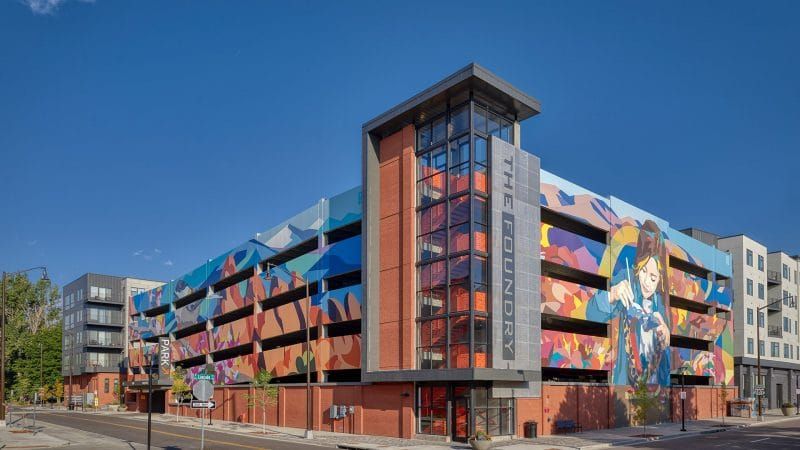
LOVELAND — When Fort Collins and Longmont began to revitalize their downtowns in the 1980s, downtown Loveland still struggled with vacant storefronts, decaying facades and little of the development activity that characterized the reinvigoration of Loveland’s Front Range neighbors.
Now, it’s beginning to evolve. Massive development projects such as The Foundry have brought large amounts of apartments and retail space into the market. Historic buildings have come up for sale and presented prime redevelopment opportunities. The Downtown Development Authority and local business owners have worked together to beautify building storefronts. Downtown Loveland has started to feel like a downtown.
“Honestly, it’s been a very long time coming,” said Nathan Klein, partner and commercial brokerage manager at Loveland-based LC Real Estate Group, who has nearly 17 years of experience in the Loveland market. “For the longest time the biggest barrier was that rents weren’t there to support significant development or redevelopment. That has started to change.”
SPONSORED CONTENT
Exploring & expressing grief
Support groups and events, as well as creative therapies and professional counseling, are all ways in which Pathways supports individuals dealing with grief and loss.
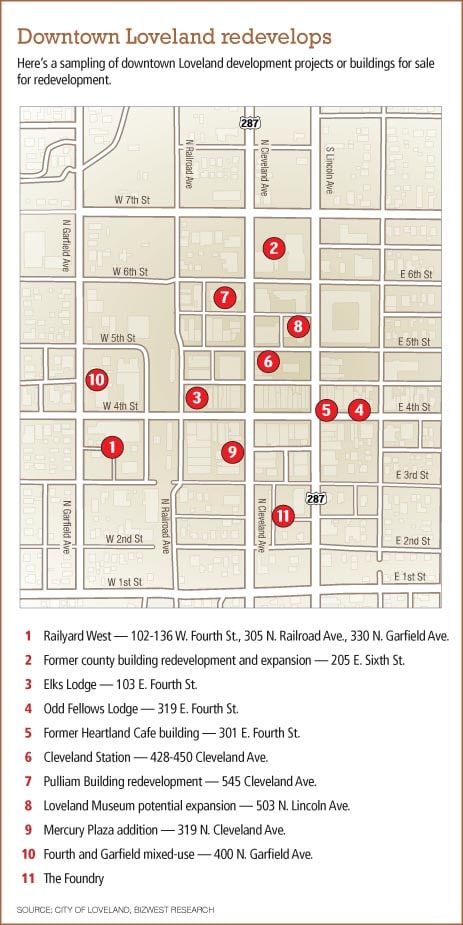
That change is taking many forms: The Cleveland Station project that is redeveloping an entire block of Cleveland Avenue; the conversion of the former Larimer County building into condos for sale; two historic venues — the Elks Lodge and Odd Fellows Lodge — coming onto the market for sale and redevelopment; the purchase of nearly an entire block by a group led by the founder of Loveland Aleworks; the potential expansion of the Loveland Museum and Gallery; and even a facade-improvement plan for existing businesses.
“I knew Loveland was lagging behind Fort Collins, Longmont, even Greeley,” said Sean Hawkins, the executive director of Loveland’s Downtown Development Authority since August 2018. “That was the part that excited me about getting to come here, working on the ramp-up phase and the restoration of older buildings. I knew there would be some tools to work on some projects.”
Loveland development professionals point to The Foundry as the project that catalyzed much of the activity underway in the city today. The $75 million development, completed in late 2018, includes 155 rental apartments, 14,000 square feet of retail and restaurant space, a 102-room hotel, a movie theater, a 460-space parking garage, and a public plaza.
“What I really see now is that because of that project, there are outside eyes taking a look at different buildings,” Hawkins said.
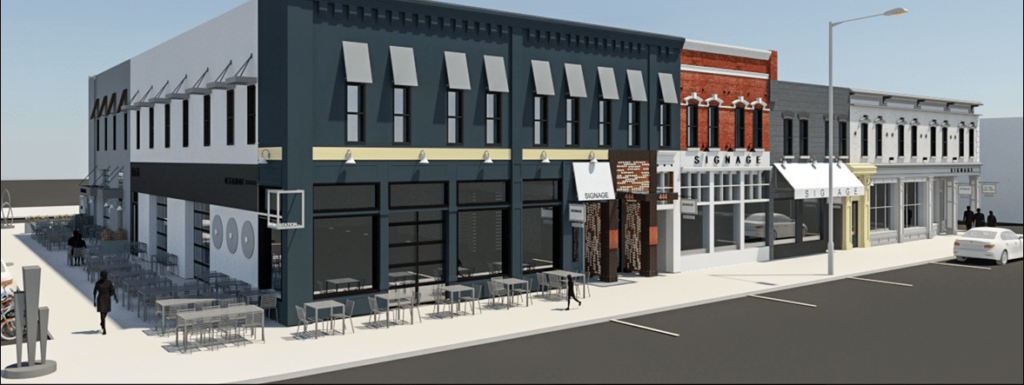
Said Hilary Dehn, a broker with Dehn Real Estate who is working on the former county building redevelopment project: “With the combo of a project like The Foundry and seeing what the downtown district was doing, we noticed we weren’t the only ones wanting this to happen. We noticed places in Loveland that offered a lot of opportunities as far as their charm, their space.”
The impact of The Foundry went beyond bringing eyes to the possibilities of developing in downtown Loveland. Its 155 apartments have helped to bring new residents to downtown.
“I think it’s a critical mass thing,” Klein said. “[Residential projects] are the things that help get you the critical mass to make things go. The rents follow the sales. Population density has increased a noticeable amount.”
Another impact has been helping create a traditional downtown feel that had been lacking in Loveland for some time. The plaza became a hub for events and activities to draw residents downtown during the evening, driving business for restaurants, bars and breweries. The movie theater similarly attracted people to the area.
“The Foundry has helped with that,” Hawkins said. “It’s part of what makes downtown special.”
It’s also emblematic of some of the challenges that downtown Loveland still faces.
About half of the 14,000 square feet of retail space in the project is still vacant. COVID-19 devastated the retail industry; making an expensive investment into a new, high-class space such as The Foundry during a pandemic is not realistic for many businesses.
“There was a global pause of retail development expansion,” Hawkins said. “We had such a big plan of reasons to come downtown. If we had a normal summer to build off the success of 2019, we would have filled the retail spaces in The Foundry. One of our goals for this year is to realize that potential.”
And although the apartments coming online downtown have helped bring residents to the area, those apartments have all been for rent; residential properties for sale in downtown are lacking. For developers, rental apartments are often a more valuable asset, but the lack of residential properties for sale can also drive away people who would otherwise live downtown.
“We would have easily considered living in downtown [when we moved], but I didn’t want to rent a place,” Hawkins said. “We need the county building project.”
By redeveloping and expanding the former county building, that development will add about 10 residential units for sale to downtown — making it unique among recent residential projects.
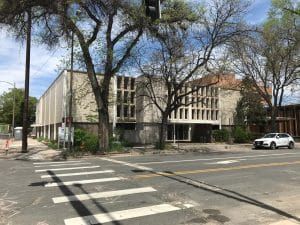
“There weren’t many ownership opportunities or vacancies [when I came to Loveland six years ago],” Dehn said. “That’s still the case, as far as I know. There’s a hole in the market there.”
Besides more residential properties for sale, professionals also say downtown Loveland could use more office space.
“I think significant daytime employment is the one thing that’s missing,” Klein said.
Echoed Hawkins: “The challenge is we’re not getting the density of office that I think we really need. We have a lot of small offices, and that’s something we aspire to, but during the day it can sometimes be quiet. The one weakness we currently have is daytime population.”
Hawkins pointed to some recent activities as positive signs for office space in downtown Loveland, such as the software company Radial Development Group moving into 430 Cleveland Ave. and the desk chair co-working space taking over 201 E. Fourth St.
“We’ve seen [desk chair] have the potential to spin off people who graduate, so to speak, from the incubator world into their own space.”
Two of the historic buildings for sale downtown, the Elks Lodge and Odd Fellows Lodge, have upstairs ballrooms that could be redeveloped into office space above a potential ground-floor retail use, Hawkins said.
“They both have a tremendous amount of character,” Hawkins said. “You can make some pretty interesting office space that some creative companies would like to be involved in.”
Whatever form current and future development activity takes in downtown Loveland, Hawkins said that maintaining the emerging feeling of a traditional downtown is paramount. One potential buyer for the Odd Fellows Lodge was turned away when they proposed a ground-floor residential use for the space, because that was inconsistent with a downtown vibe, Hawkins said.
And the city block that just sold to the group led by Loveland Aleworks founder Nick Callaway — bounded by Garfield Avenue to the west, West Fourth Street to the north, Railroad Avenue to the east and West Third Street to the south — is similarly a blank commercial slate, with a master plan in development.
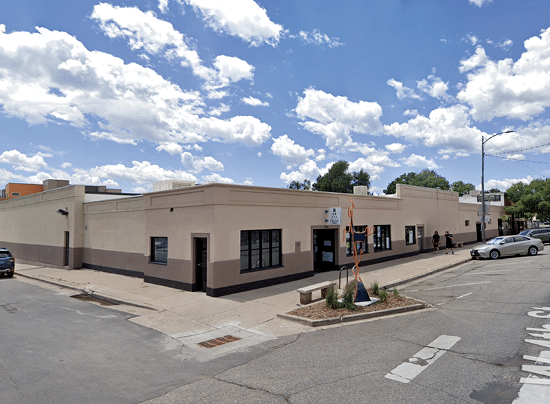
Anyone who saw Old Town Fort Collins or downtown Longmont in the late 1980s and has witnessed the continuing transformation of those cities knows that building and maintaining a vibrant downtown district is a long-term process. Loveland may have started later than its neighbors, but it’s on its way.
“I think it’s kind of exciting because we’re past the infant stage,” Klein said, “but there’s still opportunity out there.”
© 2021 BizWest Media LLC
LOVELAND — When Fort Collins and Longmont began to revitalize their downtowns in the 1980s, downtown Loveland still struggled with vacant storefronts, decaying facades and little of the development activity that characterized the reinvigoration of Loveland’s Front Range neighbors.
Now, it’s beginning to evolve. Massive development projects such as The Foundry have brought large amounts of apartments and retail space into the market. Historic buildings have come up for sale and presented prime redevelopment opportunities. The Downtown Development Authority and local business owners have worked together to beautify building storefronts. Downtown Loveland has started to feel like a downtown.
“Honestly, it’s been…
THIS ARTICLE IS FOR SUBSCRIBERS ONLY
Continue reading for less than $3 per week!
Get a month of award-winning local business news, trends and insights
Access award-winning content today!


